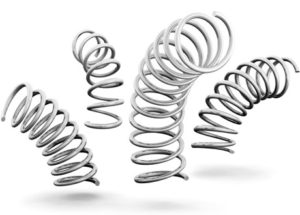Dr. Deah’s Calmanac – March Perspectives (Spring Ahead)

And the seasons they go round and round… – JONI MITCHELL
As spring approaches, I find myself thinking about the cyclical nature of life. This isn’t very deep or profound; the circular pattern of the seasons is a classic topic of contemplation with a long history in poetry and prose. Depending on my frame of mind, this repetition or redundancy can trigger feelings of despair or stuck in patterns that just won’t budge. On the other hand, considering that spring is supposed to be about new beginnings, it may spark a sense of urgency for spring cleaning and a fresh start. Either way, spring inevitably adds additional pressure to someone who is trying to be patient with incremental change.
…We’re captive on a carousel of time…
When I am at my best, I find great comfort in this predictable repetition. Seeing the plum tree in my backyard begin to blossom right on target every March fills me with a sense of safety that, at least in this part of the planet, all is right with the world. And when something is predictable, it provides us with the opportunity to be proactive and prepare for what is ahead.
…We can’t return we can only look behind from where we came…
Each season has its own idiosyncratic obstacles for those of us on a journey to cultivate a healthier, happier body image, and spring is no exception. The Mexican novelist Augustin Jose wrote this about time:
…Yesterday is gone. Tomorrow has not yet come. We have only today. Let us begin.
It is important to remember that our history is not our fate; it is knowledge. Yes, it can be a good indicator of what our tendencies are and what we have typically been inclined to do. It is not, however, a fait accompli, and we can learn from our past.
The month of March – and sometimes April (depending on how the dates fall during the year) – provides us with a substantial crop of opportunities, disguised as holidays, to practice this body-positive approach to living. One of these is Passover.
Passover is one of many Jewish holidays celebrated with a ritual feast. This feast is filled with symbolic foods and a prescribed schedule for which foods to eat when. Depending upon how observant the participants are, there is a wide range of recipes for the ritual readings at a Passover Seder. Some read from ancient texts, others from more progressive versions. Some are tailored for passionate political discussion, others for children with short attention spans. Despite the diversity of the Seder itself, there are at least three specific commonalities adhered to by the most Liberal and Orthodox Jewish celebrants alike:
- There is no leavening used in any of the meals.
- There are at least four cups of wine.
- When it is time to eat, there are no restrictions on how much you can eat.
As a kid growing up, dieting and caloric restrictions were an everyday part of my life. I was surrounded by dieters. The youngest of three girls, my two older sisters always dieted, and both of my parents did as well. The diets never really seemed to work – none of us were thin. My mother often chortled, “Imagine how fat we would all be if we didn’t diet!”
And, of course, I believed her and followed suit.
Many young girls that diet wind up becoming sneak eaters, and I was no different. Because we are forced to satisfy our hunger and cravings privately, we develop the notion that we are beasts (roar!) with insatiable appetites. Our appetite for food feels freakish, and our need to satiate this hunger is so strong that we must adopt furtive methods of feeding the monster. We feel weak in our inability to resist the urges to eat the “bad” food, and yet, the part of us that is demanding the food is a formidable foe of great strength and power. As a result, we are split and fractured around food.
The Problem in a Nutshell: Passover and other food-centric holidays present a double bind for people already struggling with feelings about how and what they eat, how and what they don’t eat, how and what they would like to eat if they were allowed to eat, and how and what they wished they had eaten when they had the chance.
I KNOW YOU HAVE TO READ THAT SENTENCE AGAIN…BUT TRUST ME IT MAKES SENSE!
The Double Bind of Passover: A Two-Act Play
Act I
The week before the Seder, we obsessed over what to wear in order to prepare for the unsanctioned but equally predictable ritual of Passover…
The Body Scan: Everyone was always checking you out to see how you “measure up” to the last time you were all together. In my family, despite the fact that very few of us were thin, there was still a hierarchy within the ranks with clear labels. The “Always Thins” – they were the winners. Praise and attention were lavished on them like buttuh on the matzoh and our jealousy dripped like honey into a nice cup of tea.
Then there were the “Always Fats.” They were already “fat’s accompli.” They would always be fat and that was that: “Those poor people.”
The “Newly Thins” were the ones I envied the most. The attention they received, the fawning, the exclamations of “How did you do it? You look amazing!” They were the stars of the night. Somehow they had conquered the inner beast. They had become successful.
The “Fat Agains” were, conversely, the lowest caste of the crew. Also known as the “YO YOs,” these were the mishpucha (family) who had lost but gained their weight back plus more. The “tsks tsks” and “cluck clucks” of the tongues, the subtle shakes of the heads, the implied message of “If I had lost that weight I would have kept it off,” or more blatantly, “I knew s/he couldn’t do it.” They were the ones my heart ached for and the club I dreaded ever joining. (Of course I was in and out of that club numerous times, and sadly it wasn’t until years later that I realized it was the dieting that actually created and perpetuated the problem.)
Act II
Off I would go to the Seder, “ready for my close up Mr. De Mille,” dressed to the nines and encased like a blintz in belly-binding control-top pantyhose. But the second bind of the double bind was not far away. After the reading of the ritual story of Passover, the feast would commence. Places everyone! But wait! It was as if they had replaced the cast with all new people and all new scripts.
All of a sudden, size and weight were inconsequential. There was a resounding chorus of, “Eat! Eat!” And, “Have more! What, you don’t like my matzo balls? This is no time to diet, this is Passover, forget about it for just one night, you look ne!” and for the next couple of hours, I felt normal. I felt happy. I felt I could eat with abandon and enjoyment. That I could savor the pleasure of food, slowly, languidly and not worry whether I was leaving crumbs behind like a guilty Gretel who subconsciously wanted to get caught eating Ring Dings in her bedroom.
I didn’t feel insatiable or monstrous. I didn’t feel “wrong.” I felt calm, and I felt in control. I had PERMISSION!
Why was this night different from all other nights?
Because on this night, I was, allowed to eat my fill in public. Now the double bind along with the control-top pantyhose, are gone and replaced with self-acceptance and a healthier relationship with food every day.
And now, there is one less reason why this night IS different from all other nights!
Predictable Changes:
In Like A Lion, Out Like A Lamb
Such is the reputation of the month of March. Weather fluctuations aside, March is a month when the symbolism of dualities and transitioning is evident with formidable tests awaiting those of us with body dissatisfaction and or eating disorders.
As people begin shaking off their winter coats and emerging from their layers of down and sweaters, the prospect of more skin showing becomes a reality. This may trigger body-image panic to come out of hibernation and an overwhelming urge to “do something drastic” in the guise of spring cleaning. We can ameliorate some of these urges by taking a proactive approach. So let’s look at some of the associations with spring:
- Spring is the season most associated with rebirth, reemerging from sleep, and perennials re-blooming.
- Springs of water replenish and circulate. Springs are not stagnant.
- When someone has a “spring in their step,” it means they have bounce and positive energy.
- Spring coils have the power to propel.

When we look at a spring, we see that, although it is circular and gives the impression of redundancy and repetition, it also has the sense of upward movement, support, and resiliency.
So, while we may be tempted to go from one extreme to another – from hibernation to full action – let’s remember that this is a time of transition and thoughtful movement. No flower blooms overnight, even though that may seem to be the case. As we let go of old habits and behaviors that are self-destructive or reinforce our negative self-image and impair our self- acceptance, let’s remember to hold on to the aspects of ourselves that are working in our favor. This is NOT an all-or-nothing proposition. Let’s use our inner strength and self-devotion as foundations and springboards to healthier relationships with food and a blossoming acceptance of the wonders of our body’s natural shape.
Some things to consider:
• There may be a compulsion to start a restrictive diet with the onset of the warmer weather.
• Fear of bingeing related to St. Pat- rick’s and other religious food-centric rituals may be anxiety provoking for those with eating disorders.
• Beware of an onslaught of ads by diet companies promoting programs promising quick and magical transformations. Messages like “Springing into the NEW YOU” are tailored to result in self-loathing with the only cure being extreme restrictive dieting or quick- x weight loss surgery interventions.
Important Dates:
First week of March – Love Your Body Week at Chico State University, California
- March 8 – International Women’s Day
- The entire month of March is Women’s History Month.
All of these occasions invite us, men and women alike, to take some time to celebrate women’s accomplishments over the years. Let’s take time to identify aspects of ourselves worthy of honoring and appreciating.
- March 17 – St. Patrick’s Day is touted as an alcohol- and food-laden celebration. The media, and frequently our peers, encourage binge drinking, which may impair mindful and intuitive eating.
- Spring equinox dates vary but fall between March 20-25, allowing us to tap into the possibilities of healthy ways to spring forward and to revel in the beautiful diversity of sizes and shapes present in all of nature’s forms. Blossoms, whether tiny and delicate or big and flamboyant, all have a place in the garden.
- Passover, Purim, and Easter dates vary but typically fall between the third week of March or later (sometimes into April). These are typically holidays with a strong emphasis on ritual feasts and traditional foods.
(And just as an aside, did you know that March is both National Nutrition Month AND National Frozen Food Month?!! Talk about duality!)

